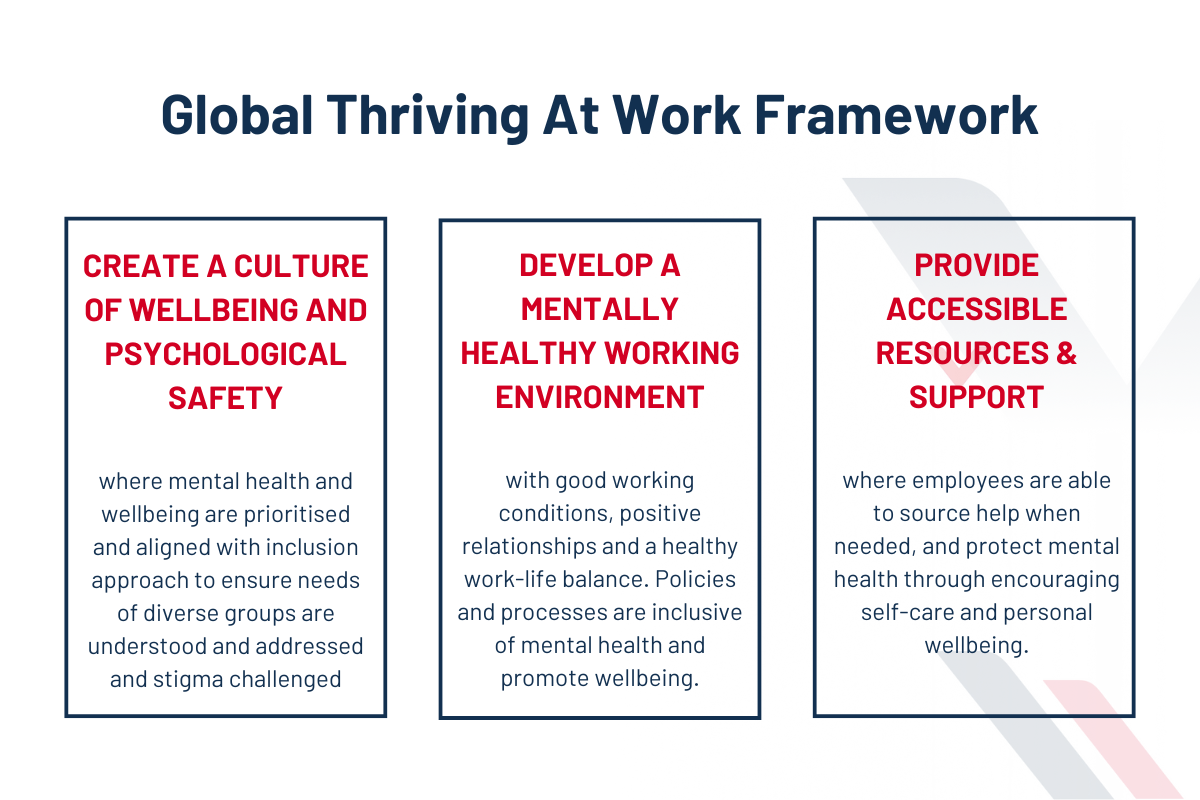Blog
A good workplace? A mentally healthy one
Companies usually overlook mental health issues with their employees, thinking that providing adequate salaries and welfare is enough to create a good workplace. However, with the rejuvenation of the workforce, more and more people are paying attention to mental health. This has become an important factor when personnel assess a good workplace.
Creating a mentally healthy workplace is an efficient way to increase productivity, encourage creativity, and create a sense of belonging for your employees. To ensure a company is a mentally healthy one, there are 03 pillars that the leader can follow: Create a culture of psychological safety; Develop a mentally healthy working environment; and Provide accessible support.
Table of Contents
What leaders can do to prevent mental health issues at work
1. Create a culture of psychological safety
The foundation of every workplace is culture. To create a mentally healthy workplace, first, create a culture in which everyone is allowed to show their emotions and true selves. This will not only make them feel safe psychologically but will also increase their sense of belonging.
Each member of the company should feel free to express their attitude towards certain issues. Of course, it doesn’t mean that one can let their negative emotions affect other coworkers. It means they can raise their voice without being judged personally. Take active steps to eradicate discrimination and dubious stereotypes at work.
With this culture, the company members will bond on a deeper level, creating a more sustainable relationship with the company and even avoiding creating toxic gossip between coworkers.
2. Develop a mentally healthy working environment
Develop a mentally healthy working environment based on the culture that was set. This includes standardizing how work is done and managed within the organization. Make sure everyone understands that they are whole, with supportive roles to help each other improve rather than competing with one another.
Managers should take responsibility for people and risk management. Take the employees' expectations and well-being into account. Encourage employees to let their voices be heard. Whether it’s a different idea for a project, or an opposing opinion on a matter at hand, create opportunities for everyone to share their opinions. Allow them to be brave to make mistakes. The more open they are to different perspectives, the more willing they will be to adapt to new things.
In this way, the company can gain various creative solutions and evaluate a problem comprehensively. Having their interests and benefits in the picture, employees will be able to immerse themselves in the work entirely.
3. Provide accessible support
Mental health is also a crucial part of the wellness of employees. Companies should also provide health care services related to this issue. Include mental health in the annual health check procedure, organize activities to educate employees about mental health. Ensure treatments are provided in time to recover if needed.
Let everyone know that their mentality is supported. This ensures all the members remain in their best state of mind and are capable of working to the fullest. It also shows that the company cares for its employees' well-being deeply and practically.

How leaders can raise mental health workplace awareness
Addressing mental health at work is uncommon and can even be awkward if not careful, especially in Eastern working environments. However, this is necessary as mental health illness will not only affect the condition but also the productivity of an employee. Not to mention their negative energy can bring down the mood of the entire team.
To raise awareness about mental health in the workplace, leaders need to take the lead and engage everyone. The role of a leader is to prevent, promote and support the mental health of members.
- Prevent: Learn about psychological risk management to prevent toxic occurrences that can create an unhealthy working environment. It may sound distant, but it consists of equality, people management, welfare system design, etc. The key to making this happen is to create a united team where everyone respects and helps each other develop without envy and prejudices.
- Promote: Provide opportunities and knowledge needed for employees to understand better about mental health. Help them identify unusual behaviors that can be caused by unhealthy mentality. Organize training to instruct them to avoid mental problems. Take notice of the changes in one’s habits to decide whether they need help.
- Support: Encourage workers with mild mental health problems to seek help and come back to work. Provide return-to-work programs and counsel to help them reintegrate into work. Identify problems that caused their condition for further improvement in the company working environment.

In the end, mental health is a sensitive topic to discuss at work. No one wants to look vulnerable in front of their colleagues, not to mention the underlying competition and other issues. Leaders have to plan carefully and be delicate in taking serious actions in order to create a mentally healthy workplace.
*The article references the research of MindForward Alliance on Rootman Management.















